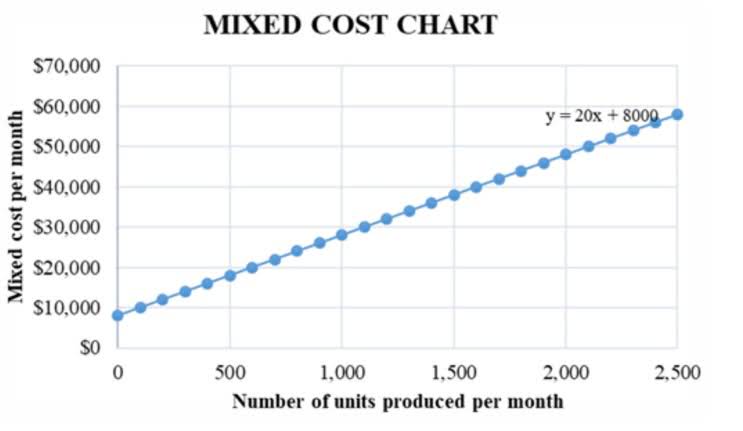
This process transfers balances to permanent accounts such as retained earnings or capital, ensuring accurate records and preparing the books for the next period. Whether done manually or using software, closing entries help maintain clear and compliant financial reporting. In accounting, closing entries reset all the temporary accounts to zero and transfer their net balances to permanent accounts. This process occurs after all regular transactions have been recorded and adjusting entries have been made for the accounting period. This ensures that the company’s financial performance is accurately reflected in the financial statements. A closing entry is a bookkeeping record that which of the following is not a closing entry? moves data from the last accounting period to the company’s permanent record.
Temporary Accounts Vs Permanent Accounts
Closing entries help in the reconciliation of accounts which facilitates in controlling the overall financials of a firm. Answer the following questions on closing entries and rate your confidence to check your answer. The following example of closing entries will assist you in quickly comprehending Oil And Gas Accounting closing entries. When preparing closing entries, there are a few things to bear in mind. Net income is the portion of gross income that’s left over after all expenses have been met.
Closing Entry for Revenue Account
To make them zero we want to decrease the balance or do the opposite. We will debit the revenue accounts and credit the Income Summary account. The credit to income summary should equal the total revenue from the income statement. Next, transfer all expense account balances to the income summary account. The total expenses are calculated and transferred to the income summary account.
- Take note that closing entries are prepared only for temporary accounts.
- They bridge the gap between one accounting period and the next, ensuring that temporary accounts start fresh while permanent accounts carry forward their ending balances.
- Now that all the temporary accounts are closed, the income summary account should have a balance equal to the net income shown on Paul’s income statement.
- Below are examples of closing entries that zero the temporary accounts in the income statement and transfer the balances to the permanent retained earnings account.
- For example, in the case of a company permanent accounts are retained earnings account, and in case of a firm or a sole proprietorship, owner’s capital account absorbs the balances of temporary accounts.
Example of Closing Entry
The main purpose of these closing entries is to bring the temporary journal account balances to zero for the next accounting period, which keeps the accounts reconciled. A net loss would decrease owner’s capital, so we would do the opposite in this journal entry by debiting the capital account and crediting Income Summary. Other accounting software, such as Oracle’s PeopleSoft™, post closing entries to a special accounting period that keeps them separate from all of the other entries. So, even though the process today is slightly (or completely) different than it was in the days of manual paper systems, the basic process is still important to understand. All expense accounts will be zero, and the expenses account will be closed, by crediting the expenses account and debiting the income summary account.

All expense accounts are then closed to the income summary account by crediting the expense accounts and debiting income summary. In this example we will close Paul’s Guitar Shop, Inc.’s temporary accounts using the income summary account method from his financial statements in the previous example. After preparing the closing entries above, Service Revenue will now be zero. This step initially closes all revenue accounts to the income summary account, which is further closed to the retained earnings account in step 3 below. The purpose of the closing entry is to reset temporary account balances to zero on the general ledger, the record-keeping system for a company’s financial data. After transferring all revenues and expenses to the Income Summary account, the remaining balance shows the company’s net income or net loss for the period.

Step 1: Close all income accounts to Income Summary
To make the balance zero, debit the revenue account and credit the Income Summary account. Clear the balance of the expense accounts by debiting income summary and crediting the corresponding expenses. After these entries, all temporary accounts (revenue, expenses, dividends) will have zero balances, and the net income and https://www.vsseg.com.br/how-to-find-and-calculate-the-equity-multiplier-2/ dividends will be reflected in the Retained Earnings account.
- The total debit to income summary should match total expenses from the income statement.
- They zero-out the balances of temporary accounts during the current period to come up with fresh slates for the transactions in the next period.
- Accounts in the statement of financial position are permanent and their balances will not be closed at the end of an accounting period, unless the company stops using the account or ceases its operations.
- The software automates the four closing entries, which involve closing revenues, expenses, income summary, and dividends to retained earnings.
Step 3: Close Income Summary Account
- Companies use closing entries to reset the balances of temporary accounts − accounts that show balances over a single accounting period − to zero.
- The balances in permanent accounts accumulate over time and are carried forward to future periods, reflecting the company’s long-term financial status.
- The permanent account to which the balances of all temporary accounts are closed is the retained earnings account in the case of a company and the owner’s capital account in the case of a sole proprietorship.
- This is closed by doing the opposite – debit the capital account (decreasing the capital balance) and credit Income Summary.
- Temporary accounts can either be closed directly to the retained earnings account or to an intermediate account called the income summary account.
- These accounts are “temporary” because they start each accounting period with a zero balance and are used to accumulate data for that period only.
- The balance in dividends, revenues and expenses would all be zero leaving only the permanent accounts for a post closing trial balance.
A closing entry transfers data from temporary to permanent accounts on an income statement to a balance sheet when the accounting period ends. Closing entries are recorded as journal entries in the general ledger. Each temporary account (revenues, expenses, dividends/drawings) is reduced to zero by transferring its balance to the appropriate permanent account using debit and credit entries. By transferring the net income (or loss) and any dividends paid to the retained earnings account, closing entries keep the retained earnings balance up to date.

The trial balance shows the ending balances of all asset, liability and equity accounts remaining. The main change from an adjusted trial balance is revenues, expenses, and dividends are all zero and their balances have been rolled into retained earnings. We do not need to show accounts with zero balances on the trial balances. We do not need to show accounts with zero balances on the trial balances.